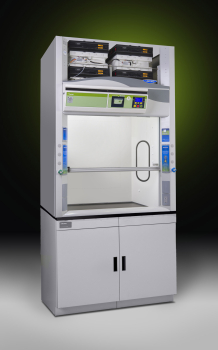Zero Net Energy Labs: Sustainability for Laboratory Science
Laboratories are places of discovery and scientific progress, housing both the research that matters and the researchers and equipment responsible for it. All that science, though, takes energy, and many facilities—especially those with significant ventilation needs—utilize it in high volumes. To combat this issue, some are looking to zero net energy (ZNE) laboratories as the sustainable, environmentally friendly homes for the science of tomorrow.
What is a ZNE lab?
 In brief, a ZNE lab is a building that produces as much energy as it consumes, achieving maximum efficiency and often embracing alternative forms of energy like photovoltaics. Since this energy balancing act is a product of careful architectural design, engineering and equipment planning ZNE labs are not yet common.
In brief, a ZNE lab is a building that produces as much energy as it consumes, achieving maximum efficiency and often embracing alternative forms of energy like photovoltaics. Since this energy balancing act is a product of careful architectural design, engineering and equipment planning ZNE labs are not yet common.
Uncommon for now, perhaps—but that doesn't mean laboratories around the globe are not taking zero energy initiatives on current buildings or planning them for future builds. The National Renewable Energy Laboratory's (NREL) Research Support Facility in Golden, Colorado, for example, is the largest completed ZNE building in the world. At 360,000 total square feet, this LEED Platinum structure reduces energy consumption while generating renewable energy. (Read more about this U.S. Department of Energy lab on NREL.gov and in the NREL PDF.)
How does a ZNE lab work?

We've established that a ZNE lab produces as much energy as it consumes—that, as one can expect, is easier said than done. One way to control the energy expenditure of a lab is to focus on the fume hoods: although the percentages vary depending on the source, it's common knowledge to lab designers that fume hoods are the biggest offenders when it comes to energy consumption. Choosing a more efficient system and using it mindfully can drastically reduce a lab's energy footprint.
Various versions of high performance and ductless fume hoods play different roles in conserving laboratory energy. Though one energy efficient fume hood is not ideal for all applications, all laboratory personnel can learn the important distinctions between the various types of high performance fume hoods and their uses. The very most energy efficient hoods are ductless and filtered fume hoods, which can handle a much wider variety of applications now than was possible historically.
Other ways a lab can achieve ZNE can be a combination of the following, depending on the science being performed within its walls:
- Photovoltaic (solar)
- Energy recovery systems
- Geothermal heat pumps
- Energy wheels
- Wind technology
- Chilled beams
- Natural gas use versus coal
- Natural lighting
- Efficient insulation
- Thermal glazed windows
- Solar filmed windows
- Less tempering of air in certain climates
What can you do?
Many of the aforementioned initiatives are large-scale design and equipment based, as ventilation efficiency and overall construction play a significant role in the energy rating of a building or lab. It's important to note, though, that change needn't be on such a grand scale to be impactful. Smaller modifications—many based on the behavior of humans within the lab, not necessarily its brick and mortar construction or contents—can also help with sustainability.
Personnel-initiated environmental stewardship in the lab can include actions like these:
- Shutting the sash on fume hoods (when appropriate) and using the blower at the lowest required speed for optimal safety
- Turning off lights when not needed (or utilizing task lighting)
- Replacing incandescent and fluorescent bulbs with more efficient LED alternatives
- Using timers for equipment shut down
- Unplugging lab equipment
- Recycling metal, paper, cardboard and plastic (all uncontaminated from lab use)
- Using water-efficient methods for glassware washing
The Takeaway
ZNE labs certainly get the gold star when it comes to energy initiatives (or Platinum, if we're talking about LEED). The equipment choices and design techniques that allow labs to attain this ZNE rating are well thought out and require an environmental commitment at every step. However, a key takeaway from this discussion is that conserving energy on any level in the lab is a worthwhile endeavor. If we are conscious of our actions both at home and in the lab, we can be part of the solution rather than contributors to the problem.
Related Articles
-
Cost Comparison: Budgeting for a Filtered Fume Hood
-
How to select a fume hood for an energy efficient lab
-
Labconco in the News: New filtered fume hood, energy efficiency
-
Understanding high performance fume hoods
-
Reducing fume hood energy consumption
-
Use 98% less water, 85% less time cleaning pipettes
Sources
| chevron_left | Video: Evaporator & Concentrator YouTube Playlist | Articles | Infographic: How to Select the Right CA Fuming Chamber | chevron_right |






